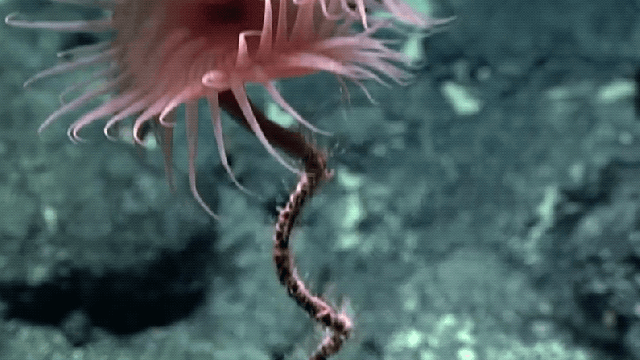For the past three weeks, biologists aboard the NOAA ship Okeanos Explorer have been investigating marine sanctuaries in the American Samoan region of the Pacific. They have found a smattering of weird and dazzling creatures, reminding us just how little we know about life at the bottom of the ocean.
NOAA’s 2017 American Samoa Expedition is part of a three-year campaign to collect important scientific information both in and around US marine protected areas in the central and western Pacific. American Samoa is a particularly rich area for discovery, consisting of three different marine sanctuaries: the Rose Atoll Marine National Monument, the waters of the National Park of American Samoa, and the National Marine Sanctuary of American Samoa (NMSAS). These areas area have been set aside to protect extensive coral reefs, deepwater reefs, hydrothermal vent communities, and even archaeological relics.
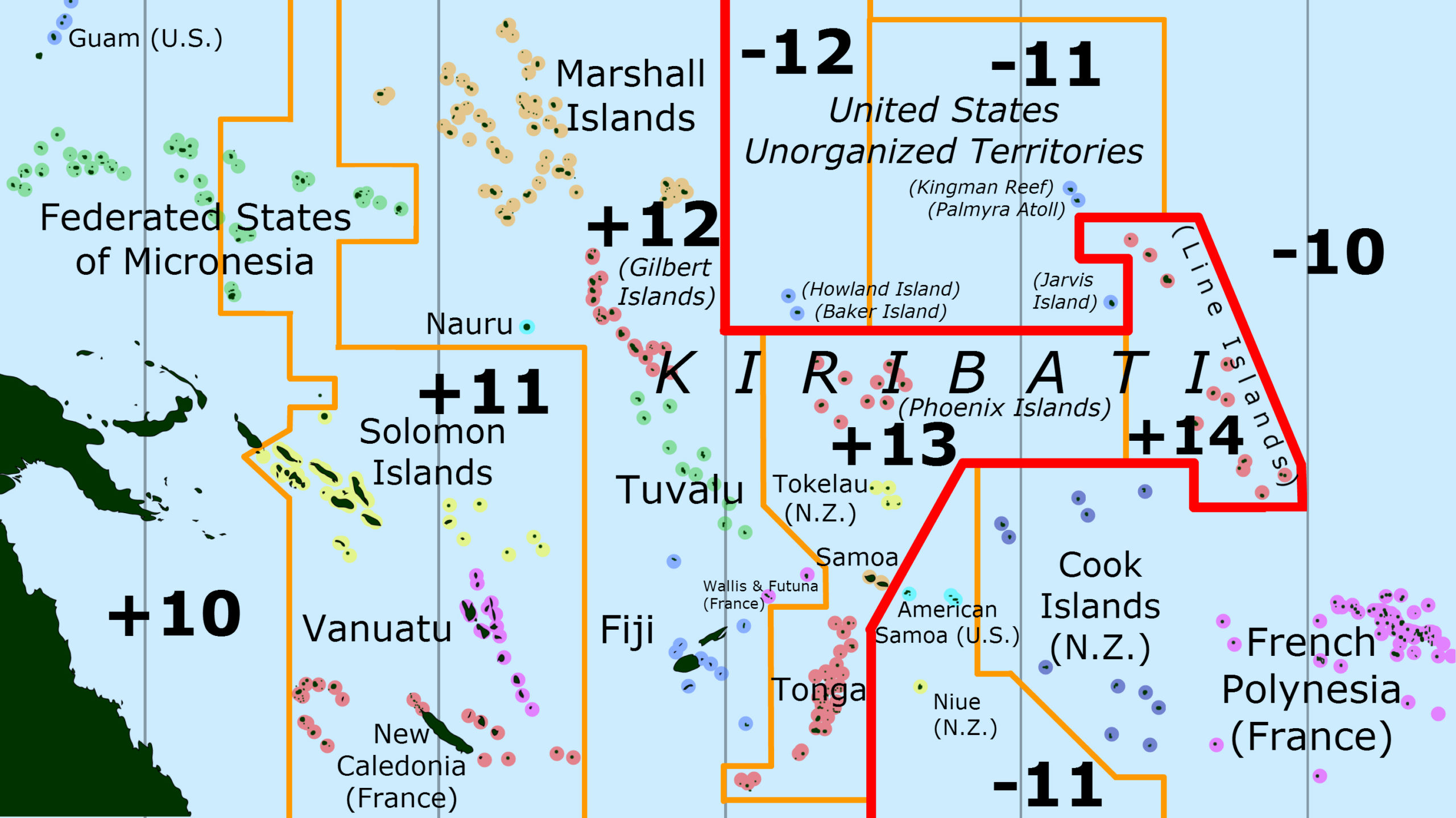
Map showing the region of the south Pacific NOAA explored on its latest round of deep sea dives. Image: NOAA
“Much remains unknown about the deep-sea habitats and geology in and around these protected places,” said NOAA team member and Lehigh University molecular ecologist Santiago Herrera told Gizmodo. “This expedition will contribute new information by exploring areas of the deep ocean in American Samoa for the first time.”
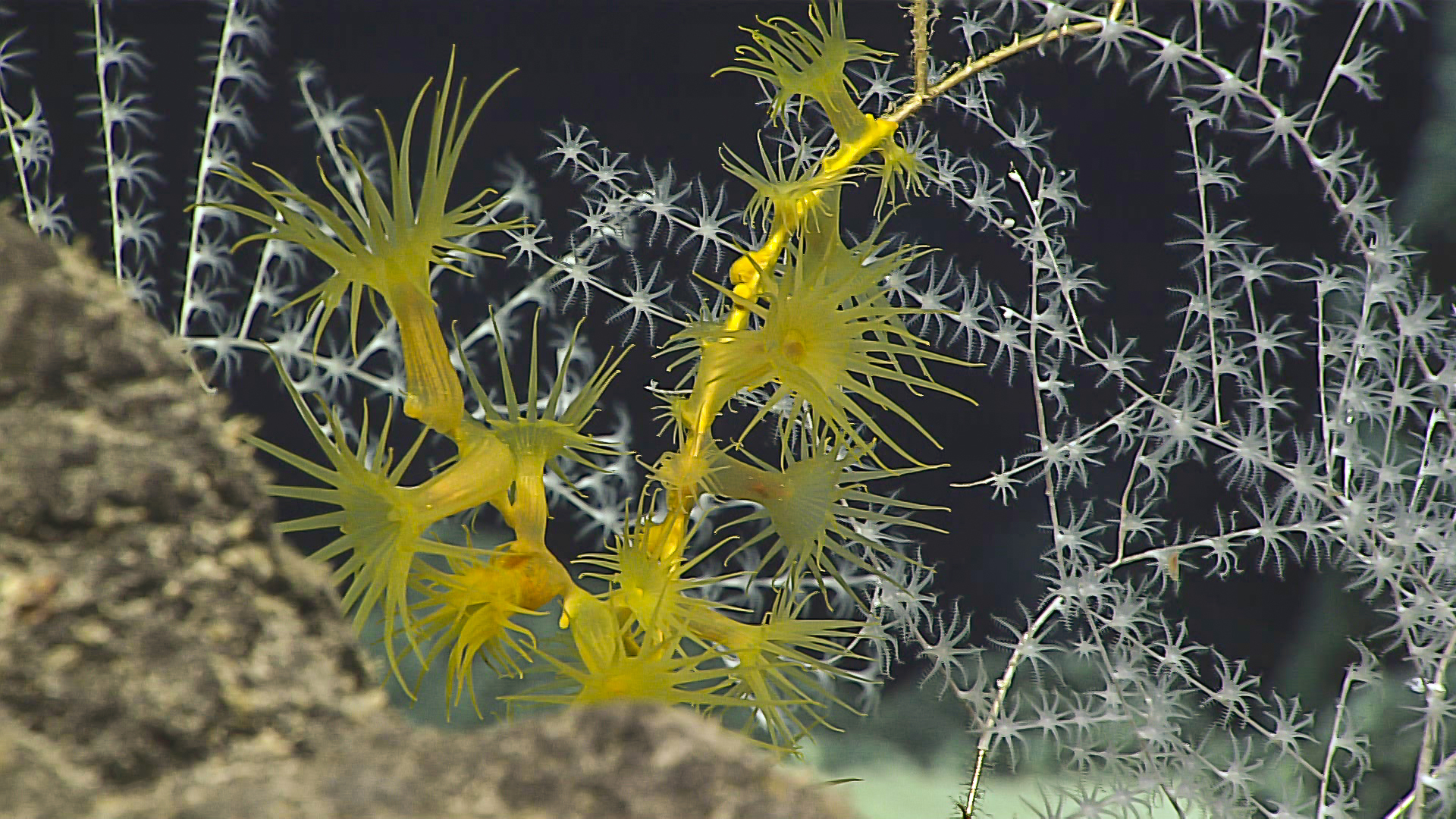
Yellow zoanthids at the base of a dead golden octocoral skeleton. (Image courtesy of the NOAA Office of Ocean Exploration and Research, 2017 American Samoa.)
From February 16 to 26, and with the assistance of a remotely operated vehicle (ROV), the scientists conducted several dives, uncovering an assortment of biological curiosities — from cosmic jellyfish and mollusks through to bipedal searobins and aquatic Venus flytraps.
“We observed at least a dozen of potential new species of sea stars, sponges, feather sea stars, corals and mollusks, several of which we have collected,” said Herrera. “These collections will allow us to confirm new species designations, provide type specimens for descriptions and enable genetic analyses to establish evolutionary relationships with other known species.”
The researchers also identified distinct communities on seamounts, and documented significant growth of an active volcano, Vailulu’u, whose summit is found half a mile below the sea surface.
Here are some of our favourite discoveries made by the NOAA scientists:
One of the more incredible finds was a Venus flytrap sea anemone (video above). Like its terrestrial counterpart, this large sea anemone closes its tentacles to capture prey, or to assume a defensive posture. According to Herrera, its tentacles have stinging cells equipped with microscopic harpoons that inject venom. They’re typically found in deep water canyons in the Gulf of Mexico, but as this remarkable NOAA video shows, they can also be found in the American Samoa.
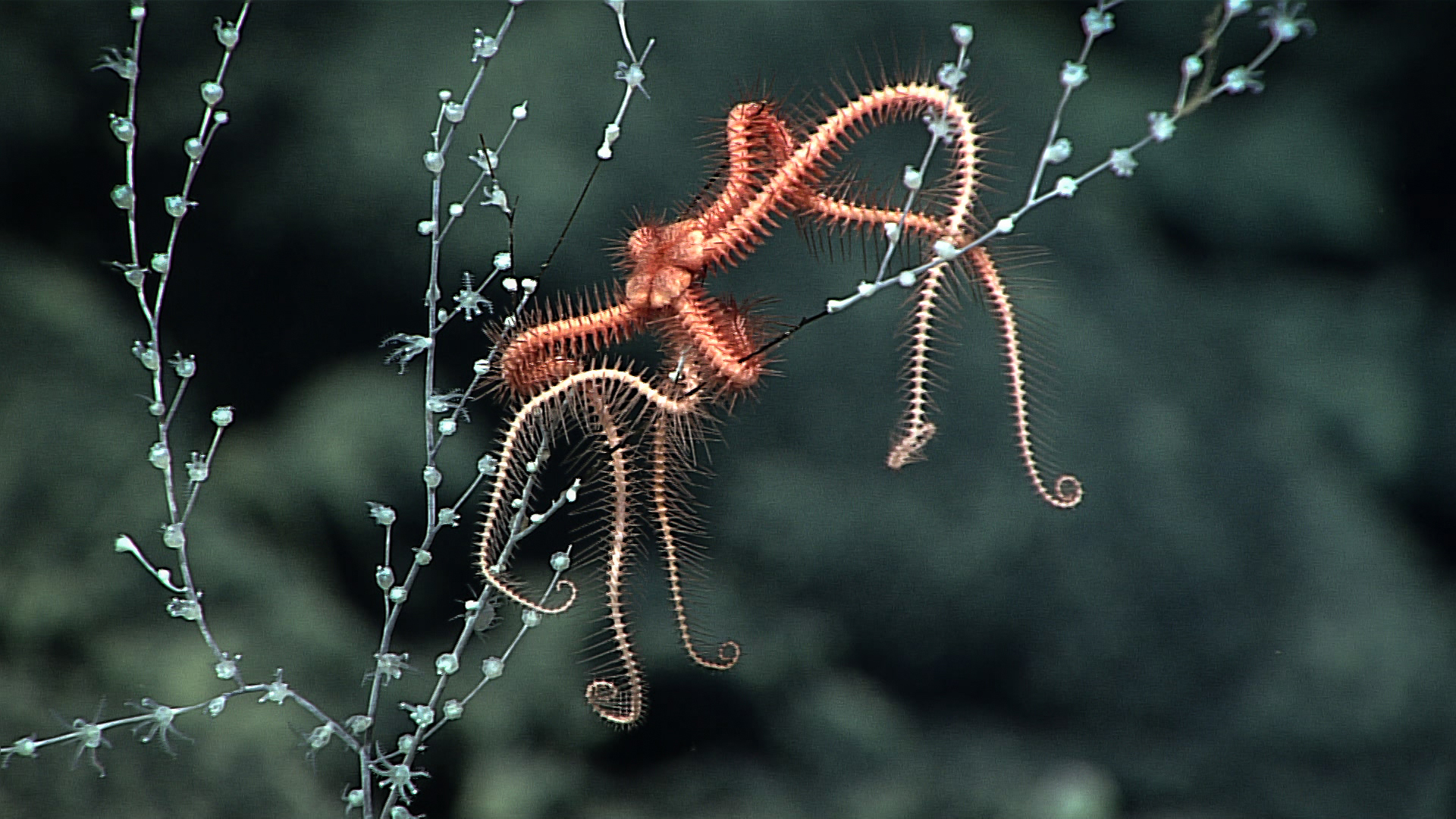
A chrysogorgiid octocoral with a brittle sea star clinging to it. (Image courtesy of the NOAA Office of Ocean Exploration and Research, 2017 American Samoa)
While investigating the Utu Seamount in the NMSAS, the researchers spied an area of loose rock that likely formed from volcanic material that had broken off a crater wall and rolled down a hill. This area is now home to a wide range of aquatic life, including chrysogorgiid octocorals and brittle sea stars (both pictured above).

Also at the Utu Seamount, the researchers stumbled upon rhopalonematid trachymedusa, a transluscent jellyfish with a very UFO-like appearance. Its reproductive organs can be seen in bright yellow, and its digestive system appears in red. The creature’s two unique set of tentacles — one facing up and once facing down — likely help it to catch prey.
This remarkable armoured searobin uses modified fins as legs to move across the seafloor. It was spotted searching for food in the Ta’u section of NMSAS.
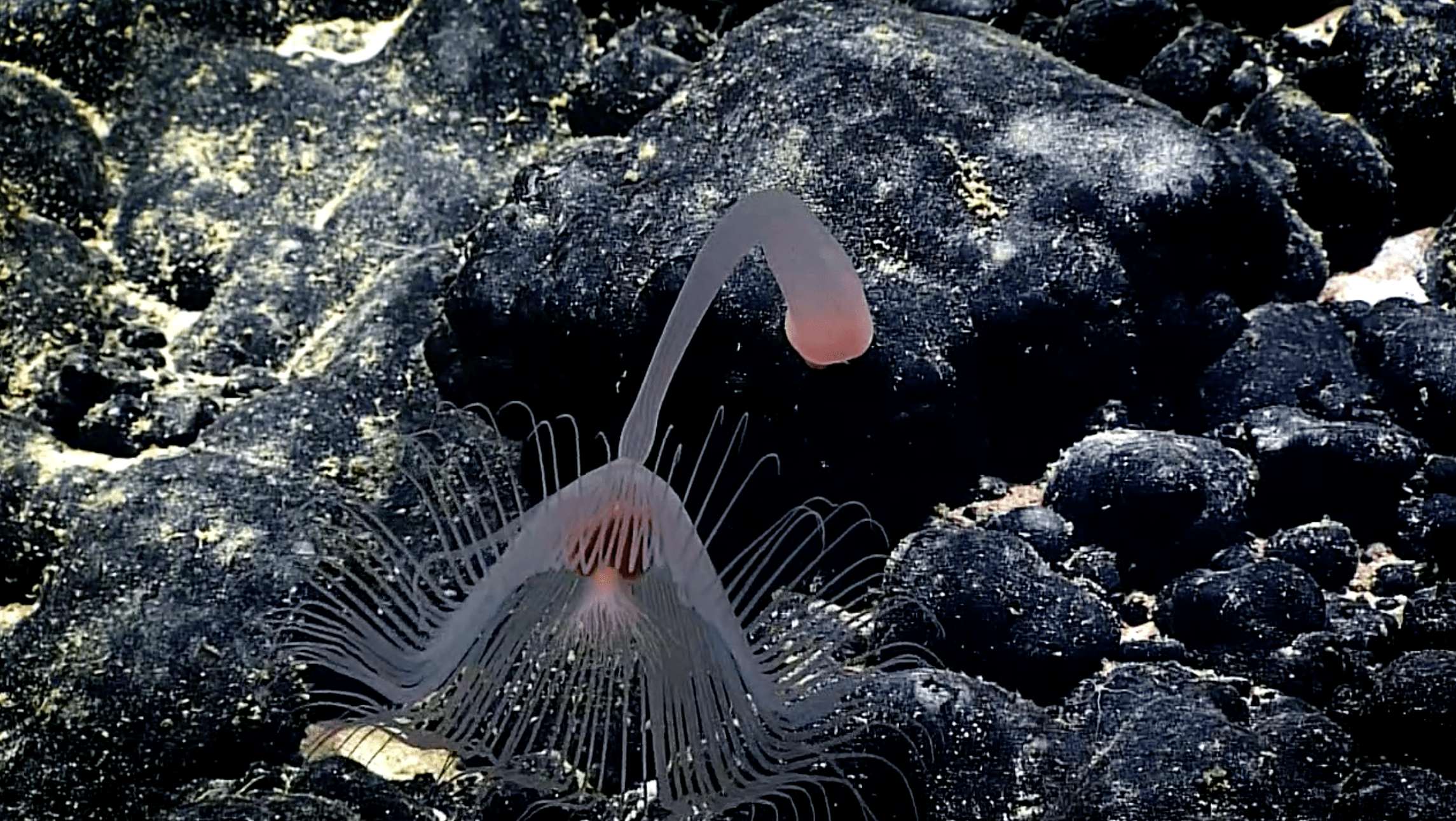
A hydroid exploring Leoso Seamount. (Image courtesy of the NOAA Office of Ocean Exploration and Research, 2017 American Samoa)
A hydroid is seen exploring the Leoso Seamount, an area that straddles the boundary between the American Samoa Exclusive Economic Zone (EEZ) and the Cook Islands EEZ. These alien-like creatures are closely related to most jellyfishes, and attach themselves to rock while using their two-tiered tentacled mouths to snatch food floating nearby.
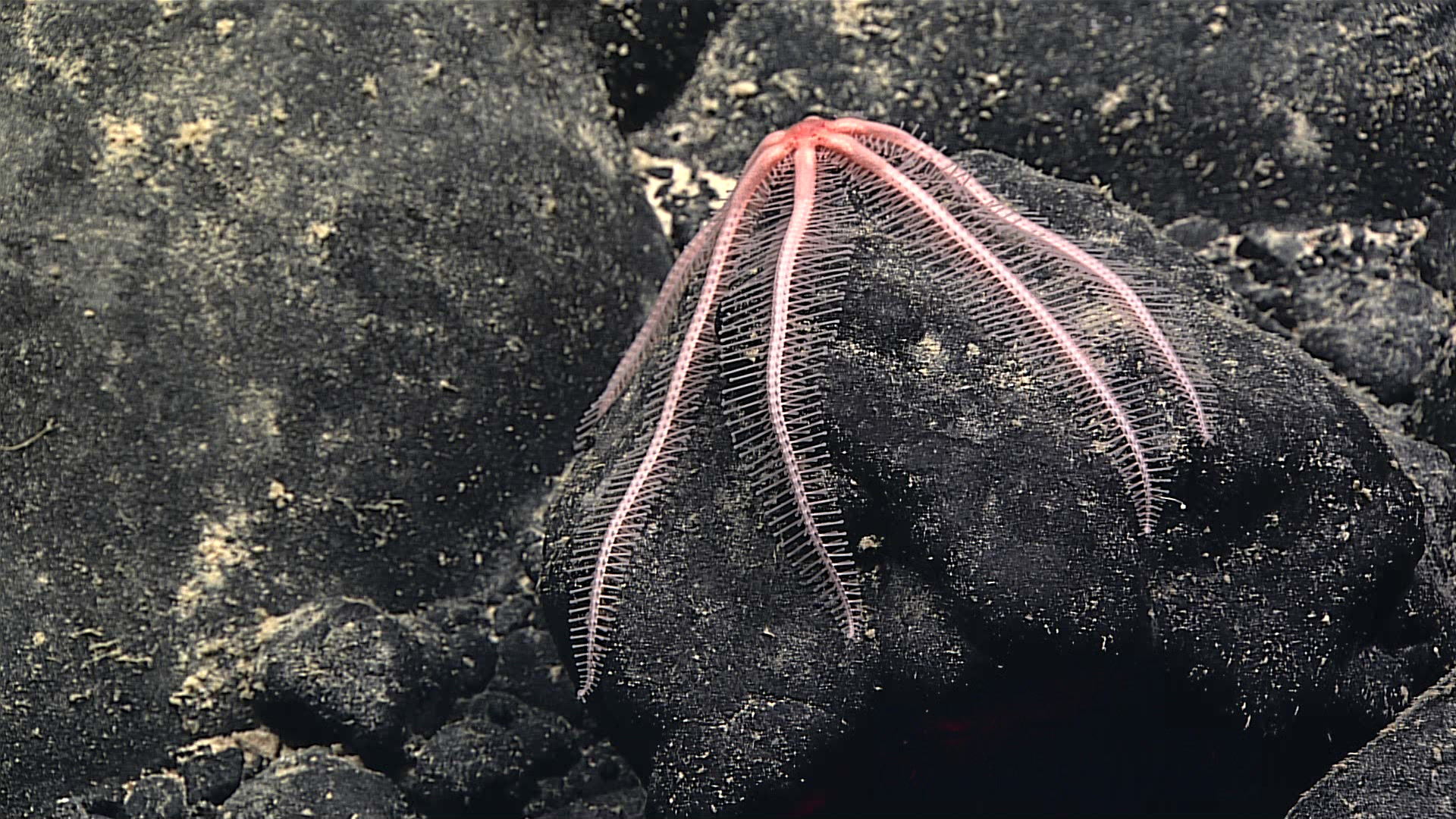
A brisingid sea star clings to a manganese rock. (Image courtesy of the NOAA Office of Ocean Exploration and Research, 2017 American Samoa)
Also at the Leoso Seamount, the NOAA researchers observed several glass sponges, yellow sea urchins, barnacles, anemones, and a fantastic, long-legged brisingid sea star that was clinging to a manganese rock (pictured above).
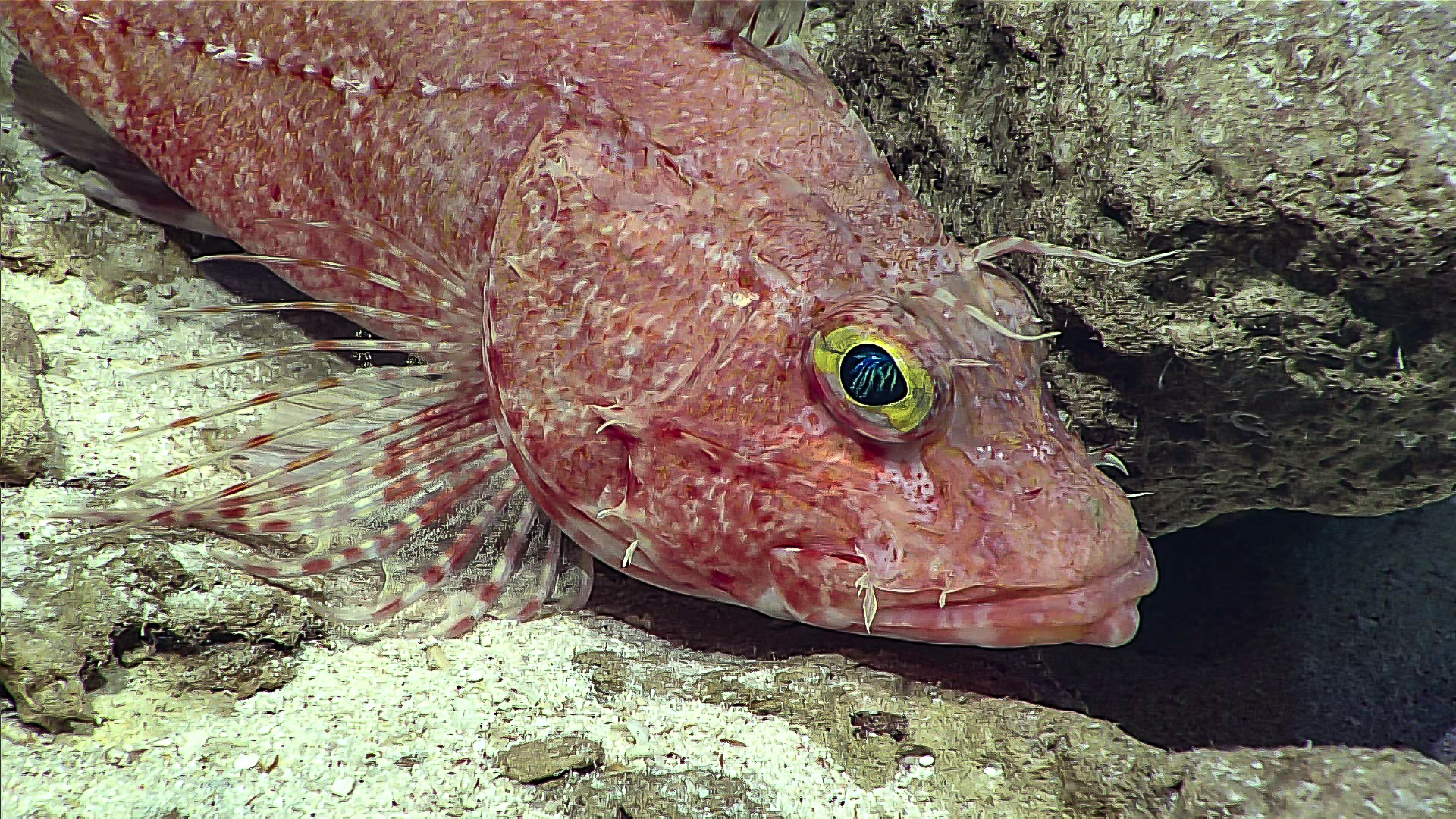
A scorpionfish. (Image courtesy of the NOAA Office of Ocean Exploration and Research, 2017 American Samoa)
This scorpionfish was spotted on the seafloor at a depth of 1,1025 feet (340 meters) in Rose Atoll Marine National Monument.
You can check out even more incredible photos and videos from the latest dive here. Congrats to the NOAA for yet another astounding mission to the deep.
[NOAA]
